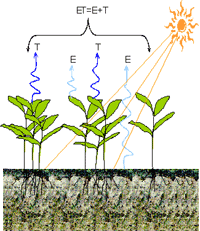Agricultural Research Division of IANR

West Central Research and Extension Center, North Platte
Date of this Version
2008
Citation
ASABE Annual International Meeting, Sponsored by ASABE Rhode Island Convention Center, Providence, Rhode Island, June 29 – July 2, 2008
Abstract
Competition for water is becoming more intense in many parts of the USA, including west-central Nebraska. It is believed that reduced tillage with increased crop residue conserves water, but the magnitude of water savings is not clear. In 2007, a study was initiated on the effect of residue on soil water content and crop yield at North Platte, Nebraska. The experiment was conducted on a set of plots planted to field corn (Zea mays). There were two treatments: residue-covered soil and bare soil. Bare-soil plots were created by using a dethatcher and subsequent hand-raking, removing most of the residue. The residue plots were left untreated. The residue was mostly from previous no-till soybean crops. Residue mass and cover were measured twice: at the beginning (June) and at the end (October) of the growing season. The experiment consisted of eight plots (two treatments times four replications). Each plot was 12.2 m (40 ft) by 12.2 m. During the growing season, soil water content was measured seven times in each of the plots at six depths using a neutron probe (CPN Hydroprobe).


Comments
Copyright 2008 ASABE. Used by permission.